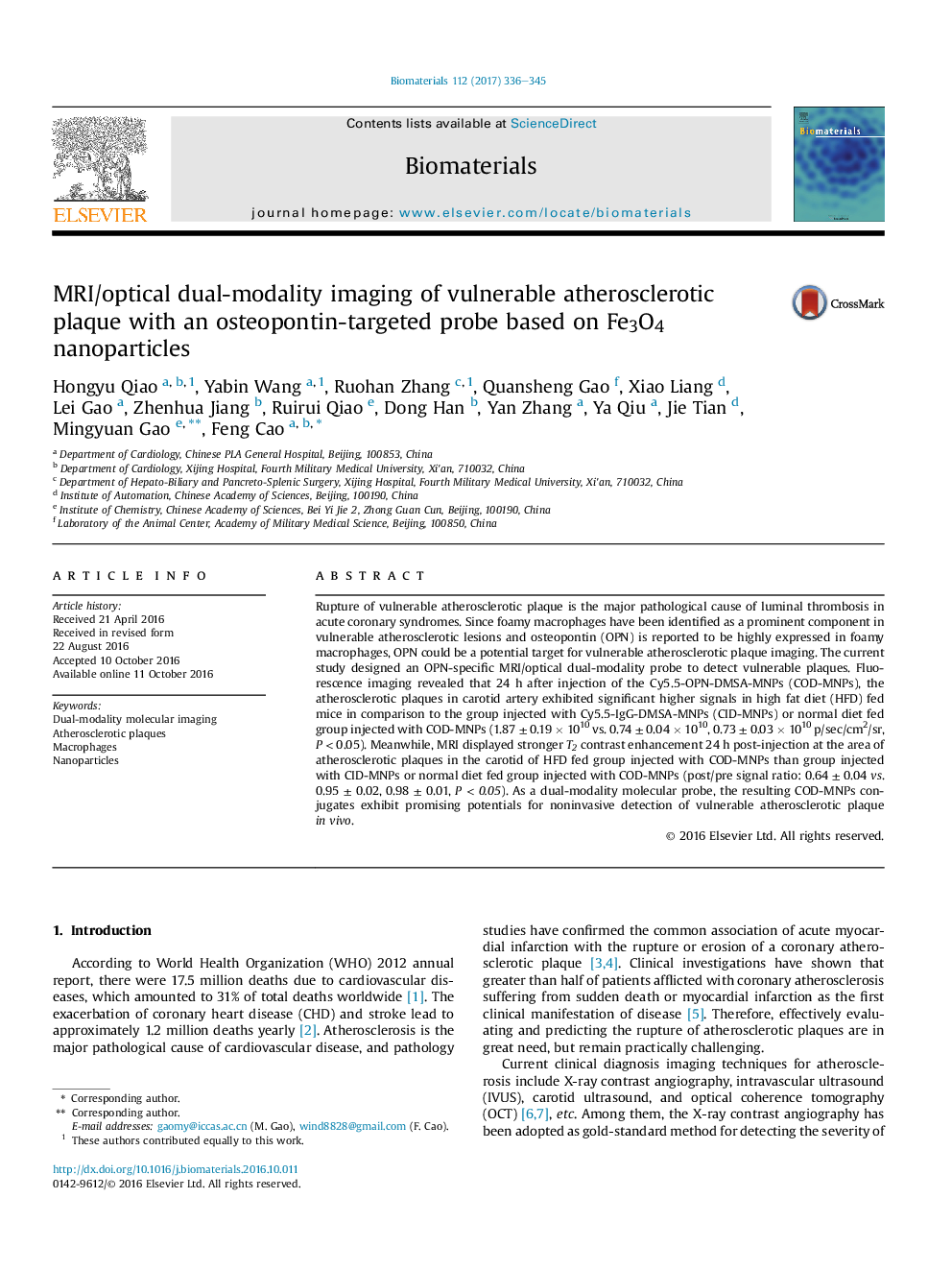| Article ID | Journal | Published Year | Pages | File Type |
|---|---|---|---|---|
| 6450980 | Biomaterials | 2017 | 10 Pages |
Rupture of vulnerable atherosclerotic plaque is the major pathological cause of luminal thrombosis in acute coronary syndromes. Since foamy macrophages have been identified as a prominent component in vulnerable atherosclerotic lesions and osteopontin (OPN) is reported to be highly expressed in foamy macrophages, OPN could be a potential target for vulnerable atherosclerotic plaque imaging. The current study designed an OPN-specific MRI/optical dual-modality probe to detect vulnerable plaques. Fluorescence imaging revealed that 24 h after injection of the Cy5.5-OPN-DMSA-MNPs (COD-MNPs), the atherosclerotic plaques in carotid artery exhibited significant higher signals in high fat diet (HFD) fed mice in comparison to the group injected with Cy5.5-IgG-DMSA-MNPs (CID-MNPs) or normal diet fed group injected with COD-MNPs (1.87 ± 0.19 Ã 1010 vs. 0.74 ± 0.04 Ã 1010, 0.73 ± 0.03 Ã 1010 p/sec/cm2/sr, P < 0.05). Meanwhile, MRI displayed stronger T2 contrast enhancement 24 h post-injection at the area of atherosclerotic plaques in the carotid of HFD fed group injected with COD-MNPs than group injected with CID-MNPs or normal diet fed group injected with COD-MNPs (post/pre signal ratio: 0.64 ± 0.04 vs. 0.95 ± 0.02, 0.98 ± 0.01, P < 0.05). As a dual-modality molecular probe, the resulting COD-MNPs conjugates exhibit promising potentials for noninvasive detection of vulnerable atherosclerotic plaque in vivo.
